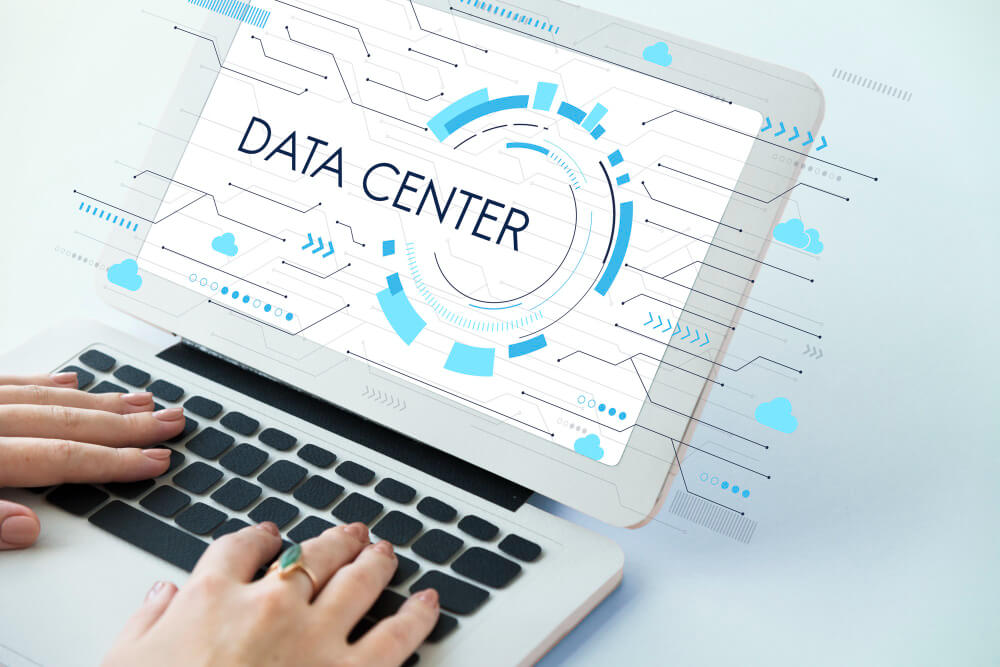
From Siloed Data to Streamlined Insights: How Modernizing Your Data Strategy with Snowflake Data Warehouse Can Transform Your Business
20 March 2024
BluePi’s Enduring Commitment to an Inclusive Workplace Culture
27 March 2024
Tags

Published by
BluePi
Data-Driven Business Transformation
Leveraging the Data Powerhouse: How Data Warehousing Supercharges Data-Driven Decisions
Data can be called the gold of today’s time. Each decision that a customer makes, and each transaction that is made generates data that is a source of valuable information for any business. For businesses, this data plays a crucial role in understanding customer behavior, optimizing operations, and gaining a competitive advantage.
But what if your business is not able to utilize the untapped power of the data that you might be generating? That is exactly what happens when you use traditional data analysis methods and have your data scattered across multiple databases, spreadsheets, and siloed systems. Such circumstances can make it difficult for your business to get a comprehensive view, to understand the trends, and make data-driven decisions. As a result, you are left behind your competitors in the ever-evolving business landscape. That is where data warehousing can prove to be a game-changer for your business.
Introducing the Data Warehouse: A Centralized Powerhouse
A data warehouse works as a central repository and consolidates data from various sources and brings it to a single, unified platform. It is a place where all the crucial information relevant to your business is stored, can be easily accessed, and categorized as well.
However, all this does not mean that a data warehouse only removes the limitations of scattered data, but it gives rise to endless possibilities. With all the business data in one place, a business can:
- Get a comprehensive view: You can look over a vast amount of data from various perspectives and unearth hidden patterns and trends.
- Make data-driven decisions: You can get crucial insights to improve the efficiency of your marketing campaigns, personalize customer experiences, and improve resource allocation.
- Enhance collaboration: You can nurture a culture where data is the driving force and where all the departments can access and analyze the data to make decisions effectively.
That infers that a data warehouse can be your key to opening the door to unprecedented growth and opportunities by transforming your hidden, scattered data into a tool to redefine your business trajectory. However, that brings the questions as to what exactly is a data warehouse and how does it works. Let’s take a glance and delve deeper.
The Data Warehouse: Your Centralized Powerhouse for Informed Decisions
Imagine that you own a restaurant chain and each branch operates at a different location. Each branch can track customer orders, inventory levels, and performance of the staff in their respective databases and spreadsheets. With this, individual restaurants can have access to their data, but, getting the knowledge of the customer preference comprehensively can be difficult. At the same time, understanding regional trends and optimizing resource allocation can be incredibly challenging. This is what happens with scattered data in a business.
Introducing the Data Warehouse: A Single Source of Truth
While a data warehouse works as a central repository and overcomes the challenges of scattered data, here are its functions:
- Data Ingestion: Using a data warehouse, you can extract and integrate data from various sources, like operational databases, CRM systems, and marketing platforms, in one place.
- Data Transformation: With data warehousing, the raw data gets cleansed and transformed. This process enables consistency, removes duplicates, and prepares the data for analysis.
- A Unified Platform: When transformed, the data is then stored in a structured format in the warehouse. This single source of truth then becomes accessible to users across the organization.
What it means is that instead of different information with different departments, all the relevant business information comes at one location, is categorized systematically, and is available for departments for analysis.
- Fuse your data landscape: Consolidate all your data in a single platform, and simplify data management and analysis.
- Get faster insights: Make data-driven decisions with real-time access to information.
- Embrace agility and innovation: Adapt to changing needs with a scalable and flexible platform.
Key Functionalities of a Data Warehouse:
- Data Storage: A data warehouse makes it possible for you to store a ream of historical data with security and in a scalable environment.
- Data Integration: A data warehouse combines data from various sources into a unified format and removes the chances of inconsistencies and redundancies.
- Data Transformation: It cleanses, transforms, and prepares the data for better analysis.
- Categorized View: A data warehouse categorizes the data on the basis of specific subjects, e.g., sales, marketing, customer, etc., which ensures easy querying and analysis.
- Time-Variant Data: Along with current data information, a data warehouse stores historical data, giving way to trend analysis and comparison over time.
The Power of Data Warehousing: A World of Insights
Empowering Data-Driven Decisions:
- Unified Data Source: The data warehouse, when acts as a unified data source, eliminates the need to analyze information scattered across systems. This view empowers a business to:
- Identify trends and patterns: By analyzing data across departments and over time, businesses can uncover hidden patterns. For example, a retail store can discover the association between a customer’s demography and purchasing habits.
- Gain customer behavior insights: With a data warehouse, a business can analyze customer purchase history, website activity, and interactions across touchpoints. This allows a business to understand customer preferences, using which it can personalize marketing campaigns, and improve customer experience.
Improved Business Intelligence:
- Comprehensive Reports and Dashboards: Data warehouses clear the way for building interactive dashboards and reports. These tools convert complex data sets into easily comprehensible visuals like charts, graphs, and tables.
- Real-time KPI Tracking: Using a warehouse, businesses can monitor key performance indicators (KPIs) like sales figures, customer acquisition costs, and marketing campaign effectiveness in real-time. This enables them to identify areas to improve and make adjustments quickly.
Enhanced Collaboration:
- Centralized Data Platform: A data warehouse works as a shared source of truth for the entire organization, eliminates data silos across departments and creates a collaborative environment.
- Seamless Data Sharing: Departments can easily access and share data insights and work together towards common goals. For example, the marketing team can share customer segmentation data with the sales team to personalize outreach strategies.
Real-World Examples:
Data warehousing is not restricted to any particular industry, has an overarching application, and can empower businesses across sectors to leverage the power of data. How? Let’s explore some compelling examples:
- Retail: Imagine that you own a retail business and are unable to understand your customers’ buying habits. In such a case, a data warehouse can integrate data from sales transactions, loyalty programs, and website activity, and enable you to:
- Identify customer segments: Analyze purchase history to group customers based on demographics and preferences.
- Personalize marketing campaigns: Target specific segments with relevant promotions and offers, and gain increased sales and customer satisfaction.
- Optimize inventory management: Analyze historical sales data to predict demand, handle stocks, and improve efficiency and profitability.
- Finance: Financial institutions can use data warehouses to get a comprehensive view of their customers. By analyzing data from loan applications, transaction history, and credit scores, they can:
- Develop personalized financial products: Tailor loan offerings and investment options based on individual customer needs and risk profiles.
- Identify and prevent fraud: Analyze transaction patterns to detect suspicious activity and mitigate financial risks.
- Improve customer service: Gain insights into customer behavior and preferences, enabling banks to offer personalized financial advice and enhance customer experience.
- Healthcare: In healthcare as well, data warehouses can play a crucial role in improving patient care and optimizing healthcare operations. Hospitals can integrate data from patient records, medical imaging, and electronic health records to:
- Track disease outbreaks and trends: Analyze historical data to identify potential outbreaks and allocate resources effectively.
- Personalize treatment plans: Gain insights into a patient’s medical history and tailor treatment plans for improved outcomes.
- Reduce healthcare costs: Analyze data to identify areas for cost reduction, such as medication overuse or unnecessary procedures.
Challenges and Opportunities
While data warehouses are changing the business landscape in today’s time, it is equally true that they may come with certain challenges as well.
- Cost: The implementation of a data warehouse may involve one-time expenditures for knowledgeable staff, software, and hardware.
- Data Quality: The success of data warehousing depends on the quality of the data being stored. It means that consistent, inaccurate, or incomplete data can lead to misleading insights.
- Complexity: Designing and implementing a data warehouse can be a complex process, requiring expertise in data architecture and integration.
How to overcome the hurdles:
Fortunately, there are solutions that exist to address the challenges mentioned above:
- Cost Optimization: A cloud-based data warehouse offers a scalable and cost-effective alternative to a traditional on-premise data warehouse.
- Data Quality Management: You may implement data cleansing and validation techniques to ensure the accuracy and consistency of data entering the warehouse.
- Phased Implementation: You can start with a pilot project focusing on a specific business area to gain experience and minimize initial investment.
- Seek Expert Guidance: Partnering with a data warehousing specialist can ensure a smooth implementation process and provide ongoing support.
Conclusion
If one thinks that data warehousing is just another technology, it will lead to an imaginable blunder. It’s a strategic investment that empowers businesses to transform from data into insights. By bringing all your valuable information in one place, a data warehouse opens the door to limitless possibilities, such as:
- Data-Driven Decision-Making: Get comprehensive insights from a single platform of truth, enabling data-driven choices that drive growth and success.
- Enhanced Collaboration: Create a data-centric culture where departments can seamlessly share insights for collaborations.
- Improved Customer Experience: Understand your customers better, personalize interactions, and build stronger relationships.
- Operational Efficiency: Identify areas for improvement, streamline processes, and optimize resource allocation.
The Future of Data Warehousing:
Is Data Warehousing Right for Your Business?
The answer is likely yes. Regardless of your industry or size, data warehousing can be a game-changer. By understanding the hidden potential of your data, you can make better decisions, improve efficiency, and achieve growth.
Remember, data warehousing is an investment, not just a cost. The insights can significantly outweigh the initial investment. Contact us today to explore how our data warehousing service can empower your business!
About the Author

Published by
BluePi
Data-Driven Business Transformation

Published by
Sidhant Arora
Marketing Manager
With 8+ years of brand and marketing expertise, Sidhant has empowered 50+ businesses across industries. His passion lies in crafting impactful 360° strategies that seamlessly blend storytelling and targeted campaigns, guided by data-driven insights. He sculpts compelling narratives that resonate with target audience crafting focused campaigns to expand brand presence across digital, offline, and PR channels to unlock their full potential.
Contact Us
RELATED BLOGS






























